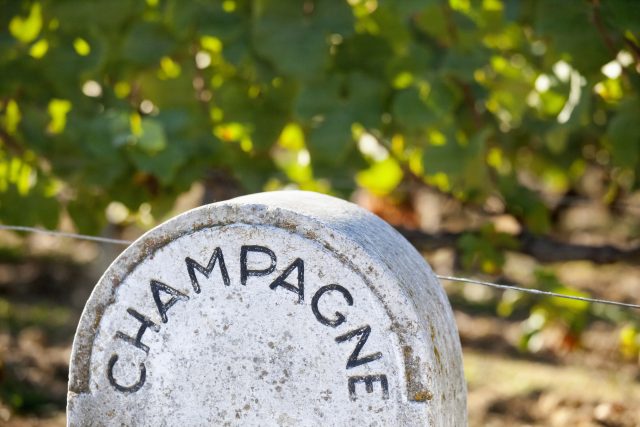Champagne Yields Set Same For 2017 While Sales Rise
Date��
2017-08-11 11:24 Source��
www.thedrinksbusiness.com/ Author:
Patrick Schmitt Translator:
The Comit�� Champagne has set the marketable yields for this year at the same level as 2016, although it records increasing Champagne shipments worldwide.

2017��s marketable yield has been set at 10,800 kilograms per hectare, which is identical to last year��s figure
At a meeting between the Syndicat G��n��ral des Vignerons (SGV) and the Unions des Maisons de Champagne (UMC) on 21 July in Epernay, it was agreed to fix 2017��s marketable yield at 10,800 kilograms per hectare, which is identical to last year��s figure (see table, below).
However, this year��s limit includes the release of 500kg/ha from the reserve �C still wine held in tanks, which is held back as security in case of a bad harvest, as well as to add balance and complexity to non-vintage blends.
As the quantity from the reserve is significantly lower than last year��s figure, which was 1,100kg/ha, it means that the amount of grapes that can be picked for making base wine for Champagne from this year��s harvest is higher in 2017 �C it was agreed to set 2017��s harvest yield at 10,300 kilograms per hectare with the aforementioned 500kg/ha from the reserve taking the total to 10,800kg/ha.
Last year��s large allowance from the reserve was granted because the 2016 vintage was naturally low-yielding by Champagne standards due to late spring frosts, hail and, as a result, a high incidence of grey rot in the region.
In other words, to reach the desired 10,800kg/ha for 2016, more wine had to be released from still wine from previous harvests.
In contrast, this year, the Comit�� Champagne has recorded good conditions in the vineyards and a favourable weather forecast for harvesting, which together should ensure a natural yield of around 10-11,000kg/ha on average in the region.
It will be an early harvest too, with unusually warm weather early on in the season bringing forward the growing cycle by 10 days compared to the average over the past decade, according to the Comit�� Champagne, which has also forecast that harvesting will start in late August, making 2017 among the five earliest harvest start-dates in the region��s history. (Other vintages with an August start-date are 2003, 2007, 2011 and 2013).
With the total marketable yield for Champagne remaining the same, it is clear that the region is attempting to prevent an oversupply of Champagne, and this year��s limit continues a trend of keeping supply below 11,000kg/ha since 2013, when total yields were set at 10,500kg/ha (lower than the 11,000kg/ha total set in 2012, which in turn marked a 12% decrease on 2011).
But, while the total yield is the same in 2017 as 2016, retaining an identical level of supply actually points to a positive mood in the region �C a yield of 10,800kg/ha translates into roughly 315 million bottles, which, in 2016, was significantly greater than worldwide sales of Champagne, which totalled 306 million.
Indeed, in January this year, Michel Letter, managing director of Mumm and Perrier Jouët, told the drinks business �C during a discussion about yields from the 2016 harvest �C that the region had thought sales of Champagne would be higher when the decision on yields was made in mid-2016.
��We were a bit optimistic��, he said, pointing out that the global market for Champagne was looking more promising in May and June last year when the yields were set, adding that the French and UK markets had declined more than expected, while the US had not risen as much as many in Champagne had initially thought.
Moving forward to the situation today, the Comit�� Champagne pointed out that marketable yield of 10,800kg/ha gives Champagne ��the means to meet a growing demand��.
It noted that Champagne shipments had risen by 2.9% in the first half of this year, with export volumes rising by more than 9%, driven in particular by Champagne sales outside Europe, which grew by 17.9%.
The organisation also commented that such a trend suggests that 2017 could represent a new record in terms of turnover for Champagne, which enjoyed its highest ever level in 2015, when shipments totaled �4.737 billion.
2016 was Champagne��s second-best year ever in value terms: just �27 million off its record in 2015.
See tables below for trends in Champagne yields and shipments since 2011, compiled by db.
Champagne yields set by the Comit�� Champagne since 2011
2017: 10,800kg/ha (10,300kg/ha + 500kg/ha from the reserve)
2016: 10,800kg/ha (9,700kg/ha + 1100kg/ha from the reserve)
2015: 10,600kg/ha (10,100kg/ha + 500kg/ha from the reserve)
2014: 10,500kg/ha (10,100kg/ha + 400kg/ha from the reserve)
2013: 10,500kg/ha (10,000kg/ha + 500kg/ha from the reserve)
2012: 11,000kg/ha (10,500kg/ha + 500kg/ha from the reserve)
2011: 12,500kg/ha (10,500 kg/ha + 2,000kg/ha from the reserve)
Champagne shipments by volume since 2011
2016: 306m bottles
2015: 313m bottles
2014: 307m bottles
2013: 305m bottles
2012: 309m bottles
2011: 323m bottles
Champagne shipments by value since 2011
2016: �4.710bn
2015: �4.737bn
2014: �4.400bn
2013: �4.365bn
2012: �4.382bn
2011: �4.408bn
��https://www.thedrinksbusiness.com/2017/08/champagne-yields-set-same-for-2017-while-sales-rise/��